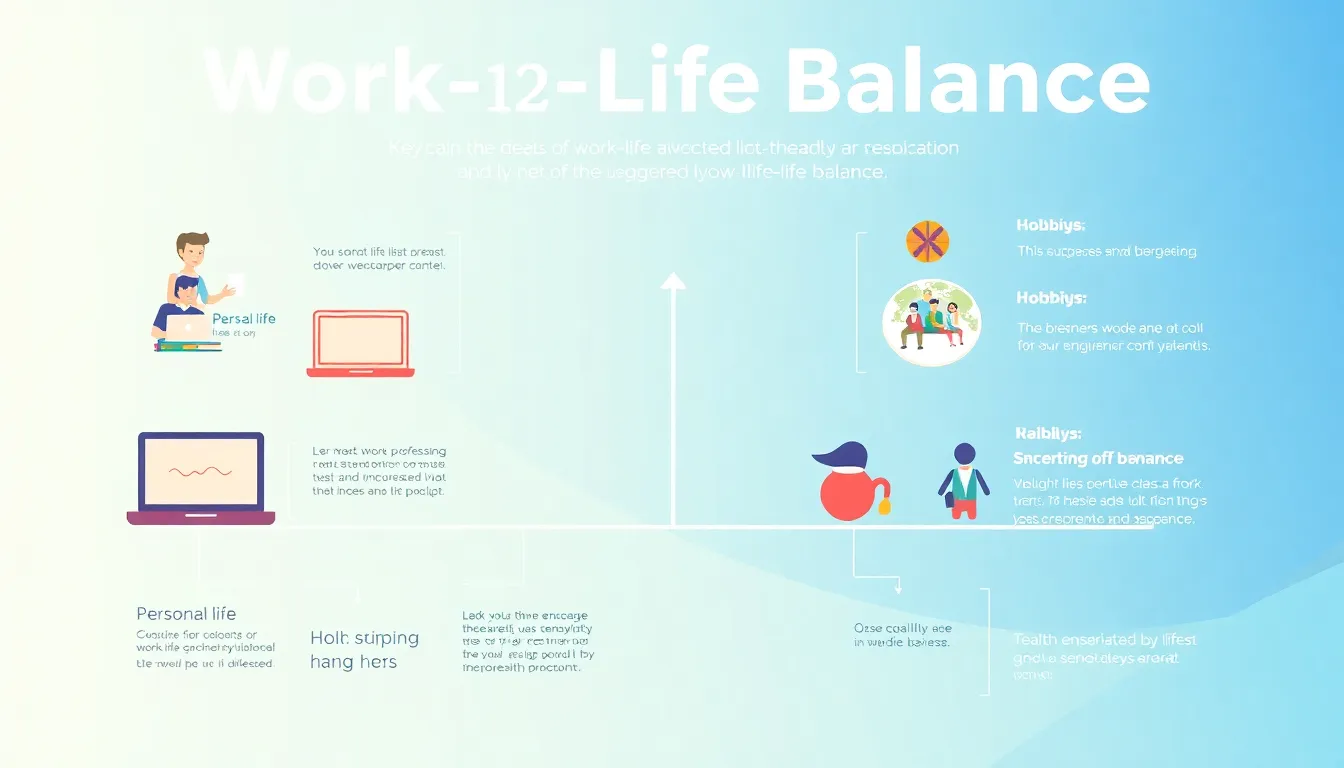Table of Contents
ToggleFinding the sweet spot between work and personal life can feel like looking for a needle in a haystack. Fortunately, achieving work-life balance isn’t just a whimsical dream: it’s an essential part of maintaining both mental sanity and increased productivity. In today’s hustle culture, where Netflix is just too alluring and work emails never seem to end, figuring out how to juggle it all starts with understanding the key principles behind a healthy work-life balance. So grab a snack and settle in as we dive deep into the art of balancing your professional grind with that much-needed personal downtime.
Understanding Work Life Balance

Work-life balance refers to the equilibrium between personal life and professional responsibilities. It’s about understanding how much time to allocate to your job versus your hobbies, family, and even relaxation. Many people define it differently, adding a personal twist to what this balance looks like. Whether it’s working from a cozy coffee shop or taking that much-needed vacation, everyone’s definition will have its unique flair.
At its core, work-life balance involves managing several dimensions, including time, priorities, and energy. With a good balance, individuals can enjoy higher job satisfaction, better relationships, and improved physical health. Striking this balance doesn’t just mean dividing time equally: it’s more about quality rather than quantity. Hence, the nuances of achieving a fulfilling balance depend on individual needs and lifestyles.
The Importance of Work Life Balance
Now, why is work-life balance so important? Let’s face it: overwhelmed and burnt-out employees don’t exactly add to a company’s success. Studies have shown that maintaining a good balance can lead to increased productivity at work. When people aren’t exhausted from working around the clock, they tend to work smarter.
Besides, a healthy work-life balance can result in improved mental health. Stress and anxiety have become pervasive foes in the workplace: prioritizing personal time can help alleviate these issues. Those who manage to maintain balance often find themselves happier overall. Simply put, a happier employee means a thriving organization. Companies that promote and understand the significance of this balance usually see lower turnover rates and higher employee engagement.
Key Components of a Successful Work Life Balance
To achieve a successful work-life balance, several key components must be in place.
Flexibility
Flexibility in schedule can make or break this equilibrium. It allows individuals to tailor their work hours around personal commitments rather than the other way around.
Priority Setting
Knowing what truly matters is crucial: prioritizing tasks helps manage workloads and reduce stress.
Healthy Boundaries
Establishing boundaries, such as not replying to work emails after a set time, fosters a healthier mindset. These boundaries create a safe space for focus and relaxation.
Quality Over Quantity
The focus should be on how effectively time is spent, rather than just putting in hours. Engaging in meaningful activities leads to a more fulfilling life.
Open Communication
Finally, fostering an open dialogue between employers and employees about workload expectations can prevent misunderstandings and improve job satisfaction.
When these components are in place, individuals can find that much-needed harmony between their professional and personal lives.
Infographic: Visualizing Work Life Balance Strategies
Visual aids can be incredibly helpful in understanding complex concepts, and work-life balance is no different. A well-designed infographic can effectively summarize strategies, statistics, and essential components of achieving balance.
Imagine a colorful pie chart demonstrating time allocation, depicted alongside examples of self-care routines, work flexibility models, and productivity boosters. Infographics can also feature real-world testimonials highlighting how various strategies worked for others. By presenting information visually, individuals can instantly grasp how to carry out life-changing adjustments into their routines.
Tips for Achieving Work Life Balance
Sure, achieving work-life balance sounds fantastic, but how does one actually get there? Here are some actionable tips:
- Schedule Breaks: Taking short breaks throughout the day keeps your mind fresh and productivity high. Just a 10-minute stroll can do wonders.
- Unplug After Work: Disconnecting from work-related technology after hours allows for true downtime. Your brain will thank you.
- Set Realistic Goals: Understand your limits and set achievable objectives for both work and personal life.
- Practice Self-Care: Whether it’s yoga, reading, or soaking in a warm bath, regular self-care is crucial for maintaining balance.
- Engage in Hobbies: Jump into activities you love outside of work: it diversifies your life and adds joy to your routine.
Integrating these tips into daily life will gradually pave the way for a healthier work-life balance.
Common Challenges to Work Life Balance
Even though the infinite benefits of a good work-life balance, numerous challenges exist.
Time Management
Poor time management can overlap work and personal time, leading to stress and burnout. Balancing deadlines with personal commitments requires constant adjustment.
Workplace Culture
A demanding workplace culture often undermines employee well-being, pushing them to prioritize work over themselves. Those who feel pressured to work late or engage after hours struggle to find balance.
Personal Habits
Sometimes, individual habits reflect a poor understanding of balance. Overcommitting to work often becomes a default, pushing personal needs to the back burner.
Overcoming these challenges will require conscious effort and a commitment to establishing a lifestyle that prioritizes both professional success and personal happiness.







